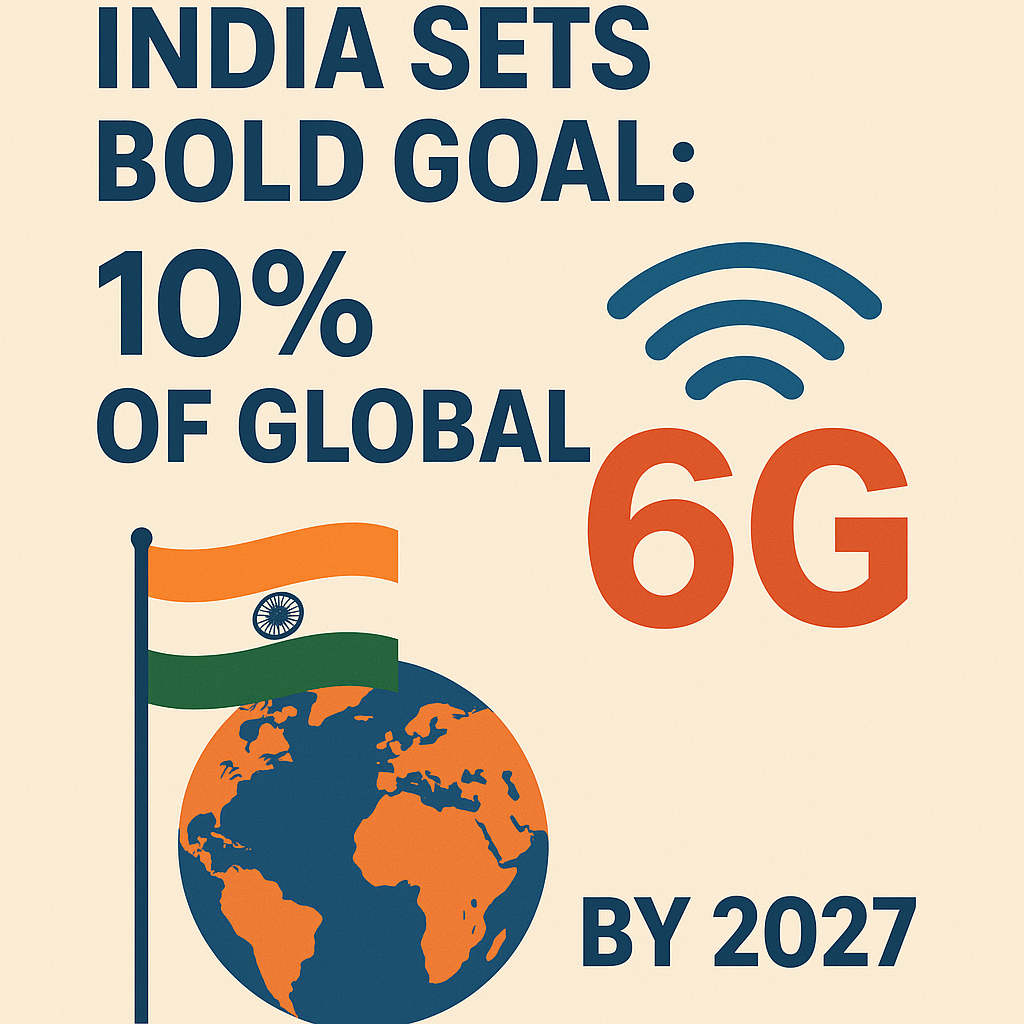6g
Discover the potential of 6G technology, its expected features, and how it will revolutionize wireless communication and connectivity.
6G FAQ – Everything You Need to Know
1. What is 6G?
6G is the sixth-generation wireless communication technology, expected to succeed 5G. It aims to deliver ultra-fast speeds, ultra-low latency, massive device connectivity, and integrate AI, edge computing, and satellite networks more deeply into mobile networks.
2. When will 6G launch?
6G is expected to be commercially deployed around 2030, with major research and standardization efforts ongoing from 2023–2027. Some early trials may happen before 2028.
3. How fast will 6G be?
6G promises speeds of up to 1 Tbps (terabit per second) — that's around 100x faster than 5G. It would allow you to download a 4K movie in under a second.
4. What is the latency in 6G?
Latency could be as low as 100 microseconds (µs) — compared to 1 millisecond in 5G — making it nearly real-time communication. This is critical for applications like remote surgery, autonomous vehicles, and metaverse experiences.
5. What technologies will power 6G?
- Terahertz (THz) spectrum for ultra-high speeds
- AI-native networks for intelligent optimization
- Massive MIMO 2.0 and beamforming
- 3D integrated networks (air/space/ground)
- Quantum communication (in theory)
- Holographic beamforming
- Edge intelligence
6. What are the use cases of 6G?
- Holographic calls & 3D avatars
- Tactile internet (remote touch)
- Fully autonomous transportation systems
- Immersive AR/VR/XR & Metaverse
- Smart factories with AI collaboration
- Real-time language translation
- Brain-computer interfaces
7. Will 6G require new infrastructure?
Yes. 6G will need:
- New terahertz band hardware
- Smarter base stations
- More edge data centers
- Possibly satellite and high-altitude platforms (HAPS)
8. How is 6G different from 5G?
| Feature | 5G | 6G (Expected) |
|---|---|---|
| Speed | Up to 10 Gbps | Up to 1 Tbps |
| Latency | ~1 ms | ~100 μs (0.1 ms) |
| Spectrum | Up to 100 GHz | 100 GHz – 1 THz (THz band) |
| AI Integration | Minimal | Core part of network |
| Coverage | Ground-focused | Air, space, ground |
| Energy Efficiency | Improved over 4G | 10x better than 5G |
9. Who is developing 6G?
Leading the 6G race:
- China (Huawei, ZTE)
- South Korea (Samsung, LG)
- Japan (NTT Docomo)
- USA (Qualcomm, AT&T, Verizon)
- Europe (Nokia, Ericsson)
- Global bodies like ITU and 3GPP are setting standards.
10. Will 6G replace Wi-Fi?
Not entirely. While 6G could support ultra-fast indoor connectivity, Wi-Fi 7 and beyond will coexist, especially in homes and businesses. 6G and Wi-Fi may converge for seamless connectivity.
11. What are the security challenges of 6G?
With so much data, 6G will face:
- Quantum hacking threats
- AI-based attacks
- Data privacy in real-time tracking
- Need for zero-trust architecture and quantum encryption
12. Will my 5G phone support 6G?
No. 6G will require new devices with compatible modems, chipsets, and antennas. Expect new smartphones, wearables, and IoT devices post-2029.
13. Is 6G safe for health?
Research is ongoing. 6G will use higher frequency waves (THz), but regulatory authorities like WHO and FCC will mandate safety standards before commercial rollout.
14. How can I prepare for 6G as a business or developer?
- Start exploring edge computing & AI integration
- Invest in IoT, XR, and real-time analytics
- Follow 6G alliances (e.g., Next G Alliance, 6G Flagship)
- Train in AI-native networking and distributed systems


